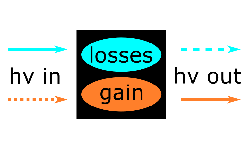Projects
Understanding the Luminescence Efficiency of Silicon Quantum Dots

Project description
Significant part of the optical properties of Si QDs is either still under controversial debate or completely unknown or was out of experimental reach up to now. This cooperation project aims to clarify several important properties that are required to obtain a comprehensive picture of the physical mechanisms and limits of the optical performance of 0 dimensional silicon nanostructures. The motivation for this study is two-fold: On the one hand, fundamental semiconductor science will benefit in general from a comprehensive understanding of the size effects in indirect quantum dots such as Silicon that occur when the dimensions are reduced below the exciton Bohr radius. However, apart from this well justified academic interest, silicon represents the technologically most important and virtually omnipresent semiconductor. The aggressive down-scaling of microelectronics industry is progressively reducing the active silicon volumes into a size range where quantum confinement effects start to play a major role. Hence, extensive knowledge is mandatory including the cross-talking of such adjacent quantum dots. For free standing Si QDs the light emission efficiency of Si QDs can easily reach 25% and even ~50% were reported. Compared to the bulk Si quantum yield of 10-5 the reduction of the dimensions to 5 nm opens a gate into a completely new world of applications. Currently, silicon optoelectronics is able to modify, guide, switch and detect light but it is not able to efficiently generate light from electricity. However, the light sources in optoelectronics are often made of III-V semiconductors which cannot be integrated on the material level into microelectronic circuits (Si is a dopant for many III-V materials and those are mostly mid-gap defect states in Si). Realistically, there is still a long way to go until e.g. optical on-chip communication can be solely fabricated from Si-based materials. But it can be taken for granted that Si nanostructures will be the pivotal point of this technology evolution. Therefore, intense research on fundamental optical properties and the principal limits of the optical performance of Si quantum dots is important. In detail the following objectives will be investigated in details: (1) Absorption Cross Section (ACS) of Si QDs, (2) Quantum Yield of Si QDs, and (3) Interaction of the Dielectric Matrix with Si QDs.
Start/End of project
04.01.2016 until 03.01.2019
Project manager
Zacharias M
Contact person
Zacharias M
Phone:203-7420
Funding
DFG
Keywords
Nano, Nanotechnology, Materials, Nanomaterials, Nanostructures, Nanocrystals, Silicon, Quantum COnfinement, Photoluminescence, Quantum Efficiency

